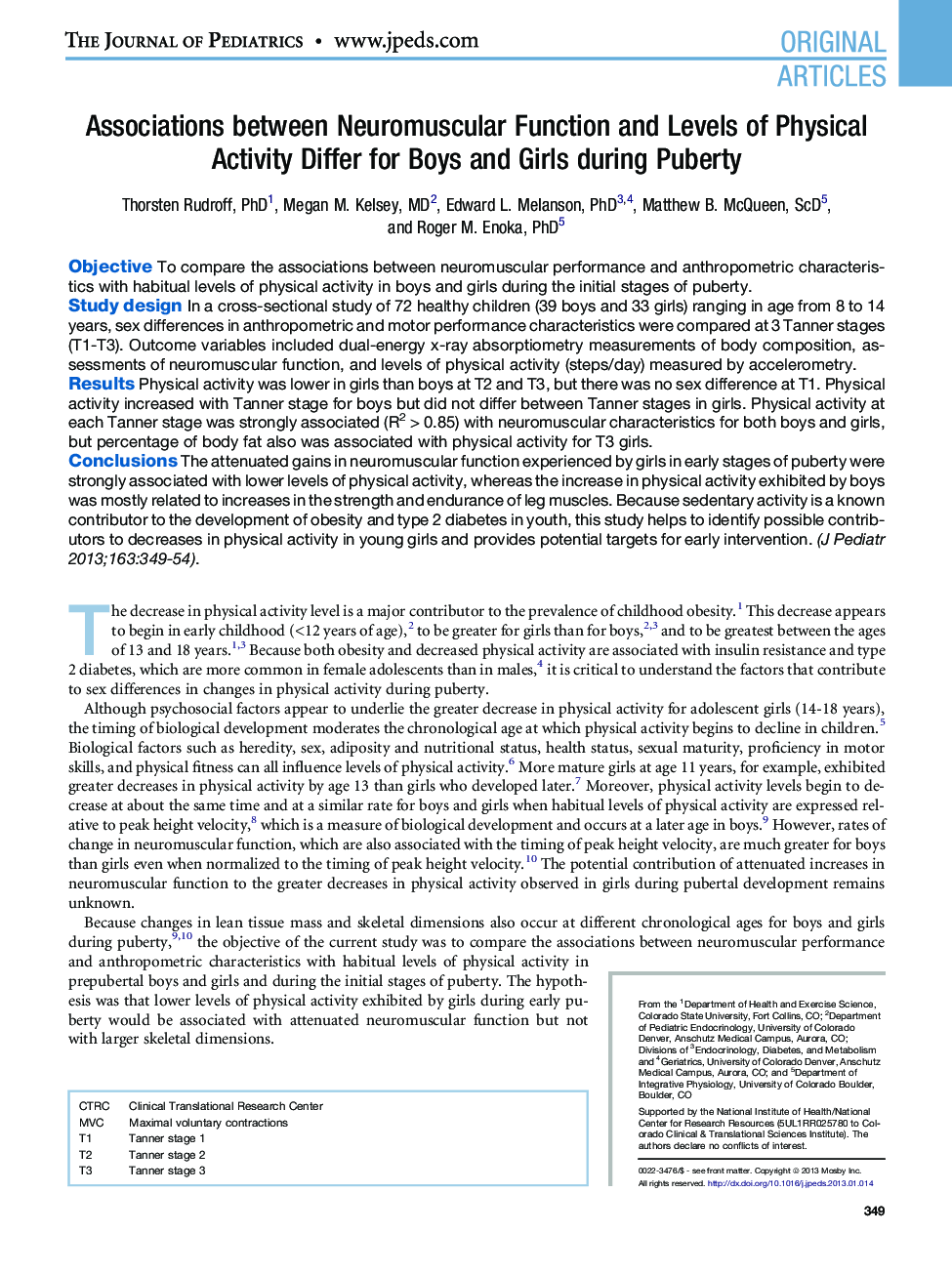| Article ID | Journal | Published Year | Pages | File Type |
|---|---|---|---|---|
| 6223464 | The Journal of Pediatrics | 2013 | 6 Pages |
ObjectiveTo compare the associations between neuromuscular performance and anthropometric characteristics with habitual levels of physical activity in boys and girls during the initial stages of puberty.Study designIn a cross-sectional study of 72 healthy children (39 boys and 33 girls) ranging in age from 8 to 14 years, sex differences in anthropometric and motor performance characteristics were compared at 3 Tanner stages (T1-T3). Outcome variables included dual-energy x-ray absorptiometry measurements of body composition, assessments of neuromuscular function, and levels of physical activity (steps/day) measured by accelerometry.ResultsPhysical activity was lower in girls than boys at T2 and T3, but there was no sex difference at T1. Physical activity increased with Tanner stage for boys but did not differ between Tanner stages in girls. Physical activity at each Tanner stage was strongly associated (R2 > 0.85) with neuromuscular characteristics for both boys and girls, but percentage of body fat also was associated with physical activity for T3 girls.ConclusionsThe attenuated gains in neuromuscular function experienced by girls in early stages of puberty were strongly associated with lower levels of physical activity, whereas the increase in physical activity exhibited by boys was mostly related to increases in the strength and endurance of leg muscles. Because sedentary activity is a known contributor to the development of obesity and type 2 diabetes in youth, this study helps to identify possible contributors to decreases in physical activity in young girls and provides potential targets for early intervention.
